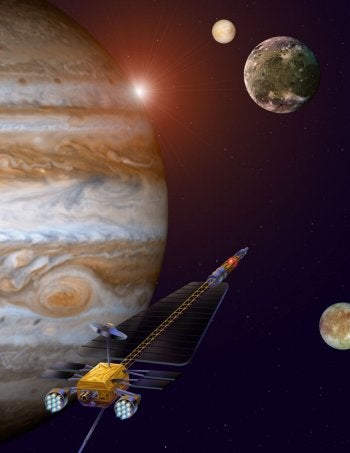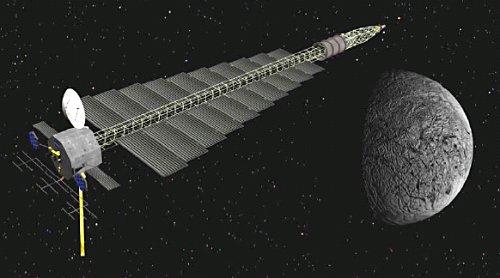To continue the exploration of Jupiter’s water worlds, NASA is thinking about the Jupiter Icy Moons Orbiter (JIMO). This sophisticated spacecraft would orbit Europa, Ganymede, and Callisto to investigate their makeup, their history, and their potential for sustaining life.
Galileo discovered that all of Jupiter’s large icy moons appear to have the three ingredients considered essential for life: water, energy, and the necessary chemical contents. Galileo’s evidence suggests that liquid water has reached Europa’s surface in geologically recent times, and it still may lie relatively close to the surface. Closer observations of Callisto and Ganymede would provide key comparisons for understanding the evolution of all three moons.
The spacecraft would spend many months spiraling toward each moon, at least one full month in orbit, and another several months spiraling away before heading to its next target. Detailed observations would be made throughout this extended period, but the highest quality observations would come during the low-altitude, high-inclination orbit of each moon.
JIMO scientists have set three major goals for the mission. First, they want to study the oceans: verifying their existence, finding their locations within the moons, studying the structure of their icy crusts, and assessing the internal processes that keep the oceans liquid. Second, they want to study the possible role of the oceans in astrobiology: determining the types of volatile substances and organic compounds on and near the surfaces, and understanding the processes involved in their formation and modification. And third, they want to investigate interactions within the jovian system: studying the atmospheres of the satellites as well as the interactions among Jupiter and the surfaces and interiors of its satellites.











